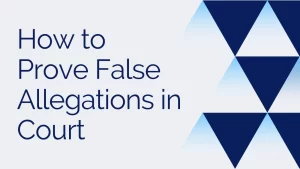Immigration Court, History and Working
What is Immigration Court?
Immigration court is an administrative court system within the Executive Office for Immigration Review (EOIR), part of the U.S. Department of Justice. It handles legal proceedings involving foreign nationals charged with violating immigration law. Judges in immigration courts determine whether immigrants should be allowed entry or permitted to stay in the U.S., or should be removed and deported to their home countries.
History and Purpose of Immigration Court
The need for specialized immigration courts arose from an increase in immigration to the U.S. in the late 19th and early 20th centuries. Previously, federal district courts handled immigration cases along with other legal matters. The first immigration court opened in New York City in 1921, followed by more courts near major ports of entry. The current system of immigration courts across the country was established in 1983 with the creation of EOIR.
The purpose of immigration court is to provide due process for immigrants while fairly and efficiently enforcing U.S. immigration law. Judges aim to provide immigrants their day in court while protecting national security and public interests.
Key Laws and Policies Guiding
Immigration Court Immigration judges interpret and apply key immigration laws passed by Congress, including:
- Immigration and Nationality Act of 1952 – Primary law governing immigration
- Illegal Immigration Reform and Immigrant Responsibility Act of 1996 – Expanded deportable offenses
- REAL ID Act of 2005 – Set standards for asylum claims
Immigration court procedures and some policies also stem from federal regulations and decisions by the Attorney General. Controversial Attorney General decisions in recent years have severely limited judges’ discretion to halt deportations.
See crs calculator For Express entry in Canada
Structure and Organization
The immigration court system today includes 68 courts across the country hearing over 700,000 cases per year. Courts are located in or near major cities with the highest immigrant populations.
While housed within DOJ, immigration courts have independent judges following Federal Rules of Evidence and Procedure. Respondents have due process rights including appeals through the separate Board of Immigration Appeals. EOIR Director and Office of Chief Immigration Judge oversee administrative functions.
Role of Immigration Judges
Immigration judges are attorneys appointed by the Attorney General to act as neutral arbiters, adjudicating cases through formal courtroom proceedings. Key responsibilities include:
- Reviewing evidence and hearing arguments
- Assessing credibility of respondents and witnesses
- Determining eligibility for various forms of relief or protection
- Issuing oral decisions on removability and requests for relief/protection
- Ordering deportation, voluntary departure, or administrative closure of cases
See permanent residency canada at Mygration.ca
Types of Cases
Seen Some major types of immigration cases seen in court include:
- Removal proceedings for being illegally present or committing deportable offenses
- Requests for asylum by those fearing persecution in home country
- Applications for cancellation of removal showing hardship if deported
- Waivers for immigration visa/status issues such as fraud or misrepresentation
Immigration courts also handle other matters like rescinding lawful permanent residence, fines, and detention issues.
Due Process in Immigration Court Immigration proceedings aim to provide basic due process protections to all individuals in the U.S. regardless of legal status. These include:
- Right to receive Notice to Appear at scheduled hearings
- Opportunity to review charges and evidence against them
- Right to retain legal counsel (at own expense)
- Right to testify, present evidence, and call witnesses
- Right to appeal adverse decisions to a higher tribunal
However major resource limitations, barriers accessing counsel, and ever-increasing caseloads frequently undermine realizing full due process rights. Lack of appointed counsel for indigent immigrants also remains controversial.
Immigrants
in immigration court cases are foreign-born individuals charged by the Department of Homeland Security (DHS) with violating civil provisions of immigration law. Most face removal proceedings after coming into contact with immigration enforcement because of illegal entry/presence, visa overstays, certain crimes committed, alleged fraud/misrepresentation, national security concerns, or other reasons established in the Immigration & Nationality Act.
Government Attorneys
Immigration courts feature an adversarial process between immigrants and attorneys representing the U.S. government’s interests, most from DHS branches:
- Office of Chief Counsel – argues removal cases
- Immigration and Customs Enforcement – presents cases involving detained immigrants
- Customs and Border Protection – initiates most new NTA filings
Advocates and Representation
While not required by law, advocates like immigration attorneys and accredited representatives provide key support helping immigrants navigate complex proceedings:
- Explaining processes and rights
- Gathering facts and supporting evidence
- Presenting legal arguments against removal
- Assisting with applications for relief/protections
Having qualified representation significantly boosts immigrants’ chances of successful outcomes. However about half of immigrants lack representation due to barriers accessing and affording counsel. Pro bono efforts help offset shortages.
Outcomes and Effects of Immigration Court Decisions
Deportation If judges determine immigrants are deportable and ineligible for relief, they will issue final orders of removal sending them back to countries of origin or third countries if possible. Such outcomes separate families and can permanently bar returning to the U.S. Deportations have grown steadily with over 337,000 issued in FY2019 from immigration court orders or other procedures.
Relief and Permissions to Stay
Immigrants whom judges deem eligible for protections or discretionary relief may receive:
- Asylum – for those fearing persecution back home
- Cancellation of removal – for long-term immigrants with hardship
- Waivers – excusing issues like fraud/misrepresentation
- Non-LPR Cancellation – for victims of abuse/violence
- Temporary Protected Status – for unsafe conditions preventing return
If granted relief, immigrants can continue living and often working legally in the U.S., but may need to renew temporary statuses periodically or pursue permanent residency.
Detention
Many immigrants undergo proceedings while held in immigration detention facilities across the country. Decisions around initial and prolonged detention as well as bond amounts fall under immigration judges’ authority but remain controversial. Prolonged detention separates families and impacts case outcomes. Alternatives to detention programs have gained support in recent years.
Current Issues and Controversies
Backlogs and Delays
Surging caseloads and shortage of judges have contributed to tremendous backlogs in immigration courts over the past decade. Over 1.5 million cases are pending today, up from under 200,000 ten years ago. Immigrants often wait years for a hearing. Such delays leave many in legal limbo, while outcomes shift with changes in policy across administrations. Boosting staffing and resources could help ease backlogs.
Access to Counsel Given the high stakes and complex laws involved, having legal advice or representation is critical for immigrants to understand and argue their cases effectively. However only 37% of all immigrants and a dismal 14% of detained immigrants secure counsel, per recent analysis. Barriers accessing pro bono attorneys and inability to afford steep legal fees contribute to this representation crisis.
Detention Policies
Use of immigration detention has expanded in recent decades with an average daily detained population today over 50,000 per day – up from under 7,000 before 1994. Prolonged mandatory detention and high bond amounts present barriers to due process and family unity. Alternatives to detention like monitoring programs have proven effective where implemented but require resources.
Perception of Bias
Immigration courts sit within the DOJ headed by the Attorney General, who can directly intervene in decisions which some view as undermining judicial impartiality. Disparities in asylum grant rates between judges and a perceived culture of law enforcement bias erode public confidence. Independent Article I immigration courts could improve perceptions.
The Future of Immigration Court
Record backlogs, policies limiting discretionary relief, controversial reforms curtailing due process rights, and growing public scrutiny will continue posing challenges for immigration courts in coming years. On the other hand, providing adequate resources, expanding access to counsel, and strengthening judicial independence could help realize immigration courts’ vital role in our society for generations to come.
Conclusion
As the complex immigration issues facing the U.S. continue unfolding, immigration court serves as a crucial forum determining the fate of millions seeking entry or the right to remain here through impartial proceedings centered on due process and the judicious application of immigration laws. Balancing multiple pressing policy objectives while ensuring fundamental protections for all on American soil remains an ever-challenging task. However, improving court resourcing, representation access, efficiency, and insulation from political pressures could significantly advance the ability to deliver on immigration court’s societal mission.
Frequently Asked Questions
What happens if you don’t show up for immigration court? Failing to appear for immigration court hearings almost always results in immediate order of removal in absentia. Those ordered removed this way face bars to reentry and relief for 10 years or more. Reopening cases requires showing exceptional circumstances for missing court.
Can immigration court decisions be appealed? Yes, immigrants may appeal adverse decisions from immigration court like denials of relief/protection or removal orders to the separate Board of Immigration Appeals (BIA) and then possibly Federal Circuit Courts after exhausting administrative appeals.
Are all immigration courts facing backlogs? While backlogs have risen across all U.S. immigration courts, huge disparities exist. Courts handling detained dockets where immigrants have speedy trial rights tend to have smaller caseloads with less delays compared to non-detained dockets where multi-year waits prevail in some overburdened jurisdictions.
Who pays immigration judges? Federal immigration judges are government attorneys appointed by the Attorney General and paid according to standard federal salaries and grades that top out around $200,000 per year for the highest level chief judge positions under normal civil service pay scales.
Do asylum cases go through immigration court? Yes, the immigration court system headed by the Executive Office for Immigration Review (EOIR) handles the vast majority of asylum claims lodged by immigrants physically present in the U.S. seeking protection from persecution in their home countries or fear of return. Immigration judges assess credibility of asylum seekers through hearings and render decisions granting or denying asylum relief based on statutory criteria. Claims referred from USCIS interviews also often end up adjudicated in immigration court.







